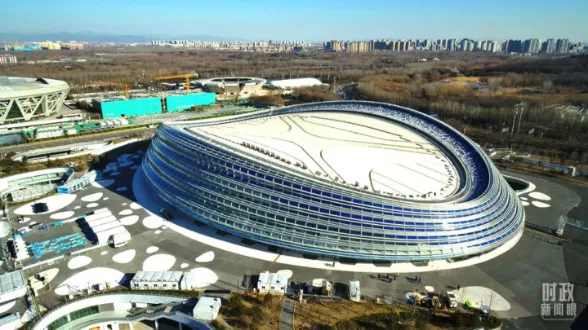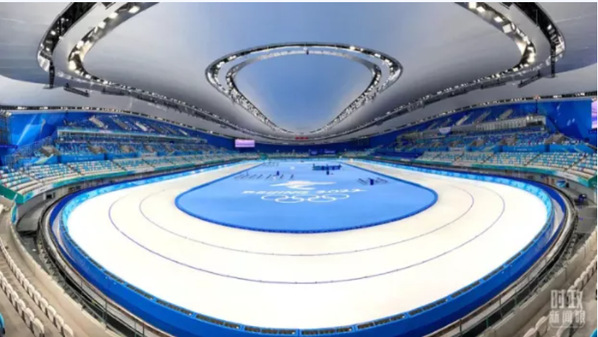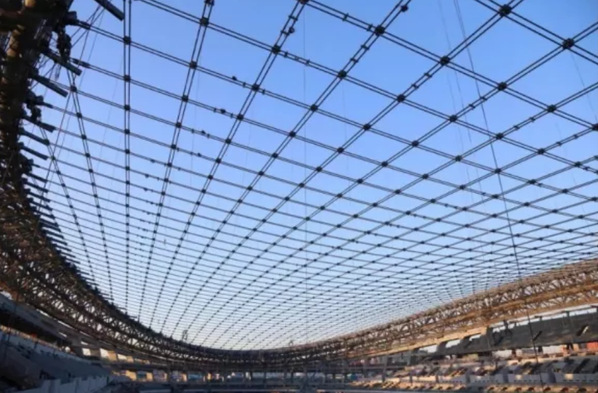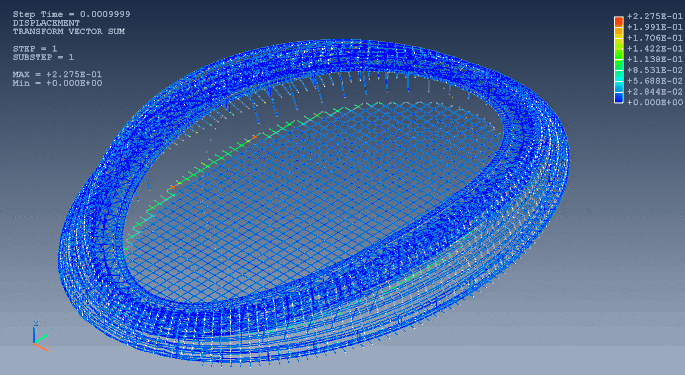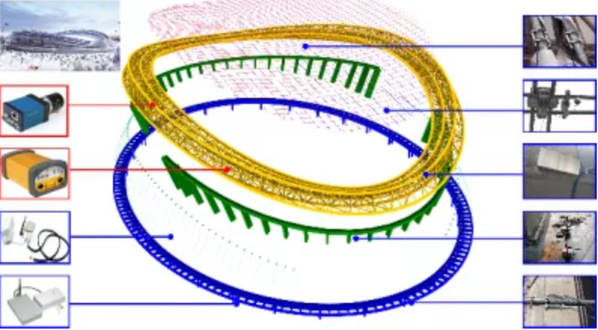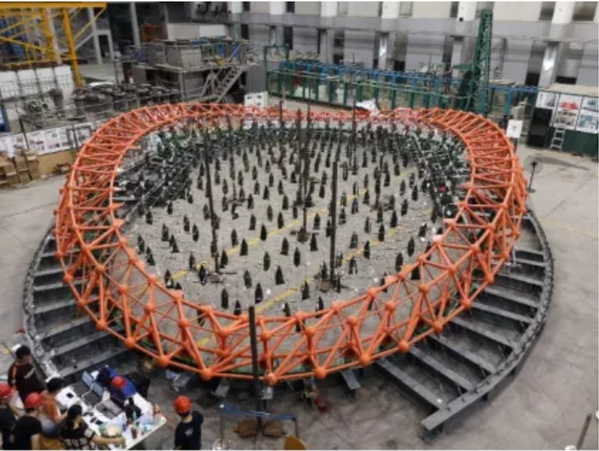The 2022 Beijing Olympic Winter Games kicked off on Feb 4, 2022. As the only major new indoor venue, the National Speed Skating Oval—dubbed the “Ice Ribbon”—has dazzled the world with its impressive “China Solution”. Prof. LUO Yaozhi, Prof. DENG Hua and Prof. YUAN Xingfei from the Zhejiang University College of Civil Engineering and Architecture contribute their wisdom to the construction and maintenance of the ultra-large-span cable network structure.
The round-the-clock “health doctor”
The roofing system of the “Ice Ribbon” adopts a hyperbolic saddle-shaped, single-layer cable network structure with the largest span among stadium buildings all over the world. In comparison with the conventional rigid roofing system, the tensile cable network roofing system can significantly reduce the amount of steel used in the structure while fulfilling the structural function. This elaborate design appears to be remarkably environmentally-friendly. However, the construction work is formidably demanding. Now that each cable weighs several tons, a cable network can be woven only through reasonable tension.
During the construction process, Prof. Luo’s team installed wireless sensors, developed by Zhejiang University, for real-time monitoring and mechanical analysis. While constructing the cable network, they assembled it on the ground first and then lifted the entire network. Due to limited space, the steel cables needed to be slightly arched so as to cross the “bottleneck”. Without accurate data, nobody would have been bold enough to bend steel cables weighing several tons. “Our on-site monitoring data can capture the impact of bending on steel cables in real time, thus providing an important basis for prompt decision-making and safe construction,” said Prof. Luo.
Diagram of simulation analysis of cable net tensioning construction process
The connected “strongest brain”
Not only did the “health doctor” work during the construction of the “Ice Ribbon”, but it is still measuring the “pulse” and “heartbeat” of the “Ice Ribbon”.
“Our team monitors the ‘Ice Ribbon’ in six major parameters, including stress, displacement, acceleration, temperature, wind pressure and cable force. The number of test points adds up to over 1,000, which hits a record high in a single-building structure,” introduced Prof. XU Xian, a member on Prof. Luo’s team.
As a multi-disciplinary cloud database, the team adopts a unified standard and system. This data fusion facilitates a better structural analysis of buildings.
This monitoring system was designed and developed by Zhejiang University and was applied to the monitoring of the National Stadium—the “Bird’s Nest”—as early as 2010. It is also used to monitor Beijing Daxing International Airport, with the largest monitoring area in the world. “This system is subject to modifications in accordance with the specific needs of each project. We will intensify our monitoring work in key phases or harsh weather conditions,” said XU Xian.
The cable network model born at Zhejiang University
During the construction of the “Ice Ribbon”, another group of people from the College of Architecture and Civil Engineering also played an indispensable role.
“The roof of the ‘Ice Ribbon’ is featured by its large span, its large quantity of steel cables and its complex coordination of internal forces, which calls for superb precision in construction,” said Prof. DENG Hua, “We built a scaled-down version of the ‘Ice Ribbon’ model, simulated the entire construction process, and verified the design performance of the structure at Zhejiang University.”
On the strength of massive numerical simulation results and experimental data, the team put forward their systematic proposal in terms of lifting, tension control and pre-tension monitoring.
In addition, the team also applied loads to the cable network by means of sandbags. “To simulate the windy and snowy condition, we hung different loads on the model so as to attest to the strength and deformation resistance of the roof,” said Prof. Deng.
The “Ice Ribbon”, together with the “Bird’s Nest” and the “Water Cube”, forms an iconic Olympic complex in Beijing, the world’s first “double-Olympic city”. Behind this engineering wizardry is also the wisdom of the Zhejiang University community.

